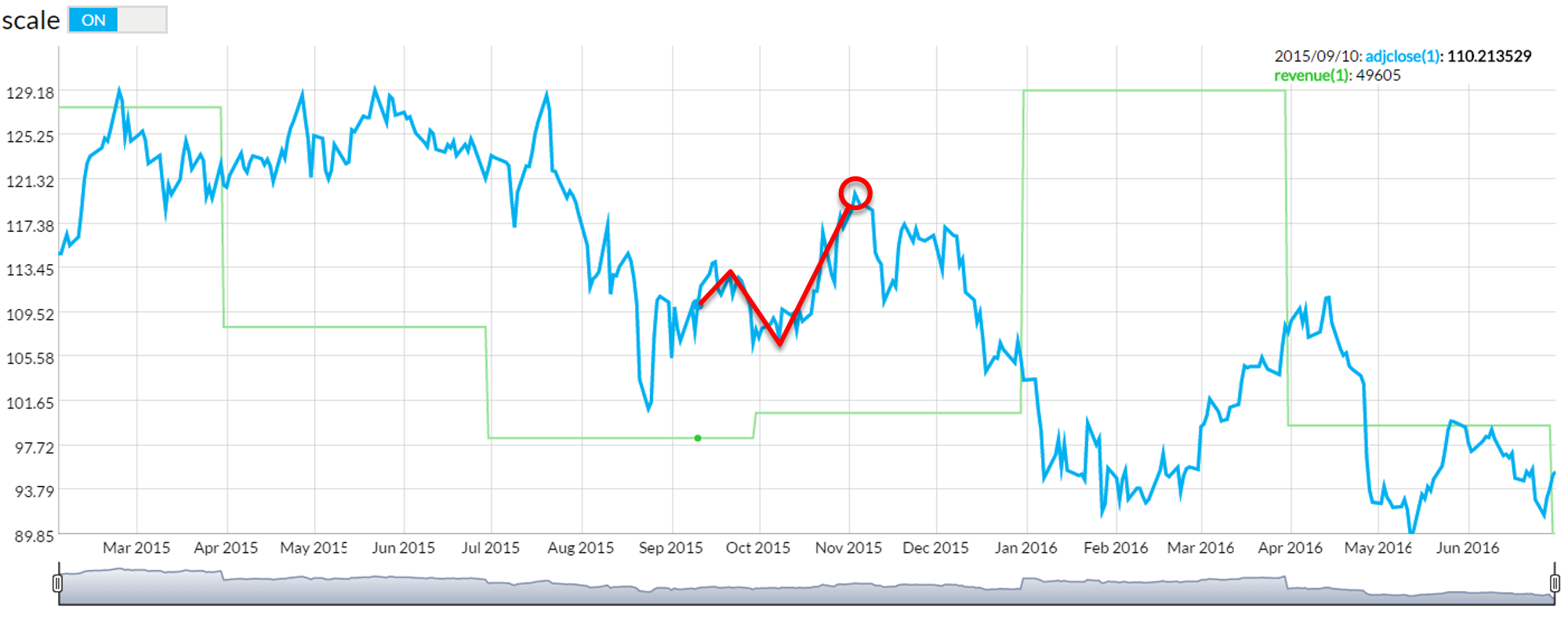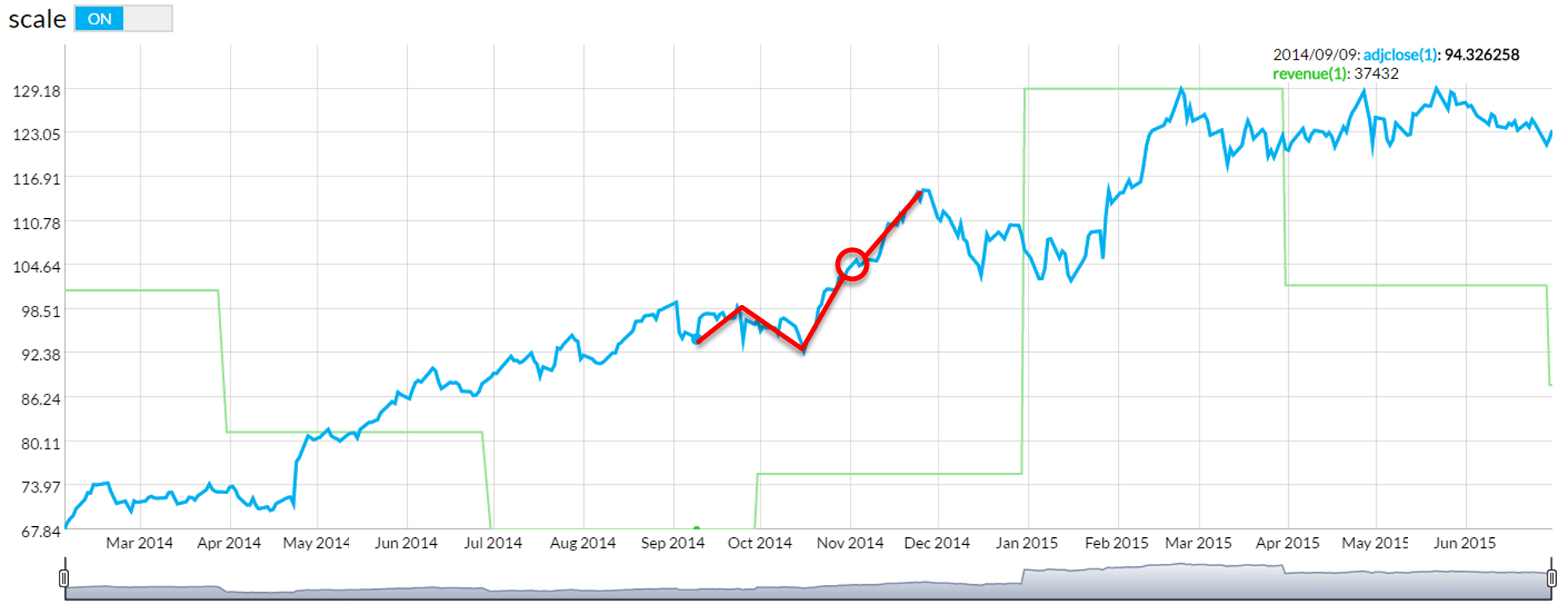Like clockwork, Apple Inc (AAPL) releases a new iPhone every year in the beginning of September with such regularity that other companies have copied this yearly release schedule for their own devices. The industry has fallen into a pattern and an intelligent investor can take advantage of a pattern. However, this year, there's one interesting wrinkle in the news that came a week before the new product launch: 14.5 billion USD in fines. In the aftermath of the iPhone 7 launch, what can we expect Apple's stock to do?
First, let's take a look at some charts from the past 4 iPhone releases. For this, we'll be looking at when the phone was announced rather than when it was released for purchase. I'll use the Genovest Visualizer, but any stock charting tool will work.
Last year, the 6s was released on Sept 9th 2015 and here's a look at their chart. I've drawn a pattern in red that shows an initial uptick in price, followed by a drop, and then a rise.
Next up, the iPhone 6, released a year previous. The pattern here is similar; a short uptick followed by a drop and then a larger rise. 
The iPhone 5s is a little different: a drop followed by a rise, and then a larger rise. 
Finally with the iPhone 5, released 4 years ago in 2012, we see a different story: a short uptick followed by a fall, and then a big fall. 
So what conclusions can we draw from these charts? For starters, the most recent 3 releases have followed a similar pattern with an end result: by the time November rolls around (circled in red), the price is higher than at the time of the announcement.
Then what's wrong with the iPhone 5 release? What happened then? In a word, Samsung. Take a look at Samsung's chart at the same time. For this graph, I'll use the Yahoo Finance charting tool.
This was the beginning of an era of profitability for Samsung that cemented it as the world's top Android smartphone vendor. At the time of the iPhone 5 announcement, talk was swirling that Apple's dominance of the high end smartphone market was coming to an end, and rightfully so. However, as seen with the next years of iPhone releases, Apple quickly adjusted to sharing profits and now Apple and Samsung are the two device manufacturers sitting on the majority of profits.
Now what about that Ireland tax deal? 14.5 billion dollars is a sizable chunk of money and it has a lot of people scared for the future of Apple. However, with all that fear, let's get a little bit of perspective. Apple has $215 billion in offshore reserves1 which means it could pay that debt off 14 times over and still keep its head above water. Apple will also appeal the ruling, which could mean 3-4 years of court time before anything gets finalized. Ireland is also opposed to the ruling, and overall, this news is far more noise than actual fear.
In addition to that, let's look at the next few months for the company, specifically what its September 7th announcement means.
By all accounts, Apple played it safe on the iPhone 7. It's design looks largely the same, and the changes that did come were not ground-shaking from a manufacturing standpoint. The lack of a headphone jack and omission of higher-end optics in the regular (and more popular) 4.7 inch iPhone 7 has many people talking, but one things few people talk about is what this means to their profit margins. By playing it safe and using largely the same the design as last year, Apple's profit margins may very well grow. These cost savings could translate into larger revenue reports in the quarters following the iPhone release.
Now with all this said, it's time to sit back and wait. Historically Apple's stock has gone down following the announcement of an iPhone, then ends the month in positive territory. People are scared about the Ireland tax deal, but perhaps unnecessarily so. Finally, a simple iPhone 7 design could lead to healthy revenue reports later.
So does an Apple bounce? Let's see what the rest of September brings.
http://bigstory.ap.org/article/74812c13fb1d42fa8e7be4c7037d365d/eu-rules-apple-must-pay-13b-euros-back-taxes?utmcampaign=SocialFlow&utmsource=Twitter&utm_medium=AP ↩